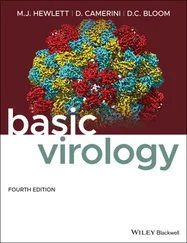Jane Flint - Principles of Virology
Здесь есть возможность читать онлайн «Jane Flint - Principles of Virology» — ознакомительный отрывок электронной книги совершенно бесплатно, а после прочтения отрывка купить полную версию. В некоторых случаях можно слушать аудио, скачать через торрент в формате fb2 и присутствует краткое содержание. Жанр: unrecognised, на английском языке. Описание произведения, (предисловие) а так же отзывы посетителей доступны на портале библиотеки ЛибКат.
- Название:Principles of Virology
- Автор:
- Жанр:
- Год:неизвестен
- ISBN:нет данных
- Рейтинг книги:3 / 5. Голосов: 1
-
Избранное:Добавить в избранное
- Отзывы:
-
Ваша оценка:
- 60
- 1
- 2
- 3
- 4
- 5
Principles of Virology: краткое содержание, описание и аннотация
Предлагаем к чтению аннотацию, описание, краткое содержание или предисловие (зависит от того, что написал сам автор книги «Principles of Virology»). Если вы не нашли необходимую информацию о книге — напишите в комментариях, мы постараемся отыскать её.
Volume I: Molecular Biology
Volume II: Pathogenesis and Control
Principles of Virology, Fifth Edition
Principles of Virology — читать онлайн ознакомительный отрывок
Ниже представлен текст книги, разбитый по страницам. Система сохранения места последней прочитанной страницы, позволяет с удобством читать онлайн бесплатно книгу «Principles of Virology», без необходимости каждый раз заново искать на чём Вы остановились. Поставьте закладку, и сможете в любой момент перейти на страницу, на которой закончили чтение.
Интервал:
Закладка:
| Virus dilution | Cytopathic effect | |||||||||
|---|---|---|---|---|---|---|---|---|---|---|
| 10 –2 | + | + | + | + | + | + | + | + | + | + |
| 10 –3 | + | + | + | + | + | + | + | + | + | + |
| 10 –4 | + | + | – | + | + | + | + | + | + | + |
| 10 –5 | – | + | + | – | + | – | – | + | – | + |
| 10 –6 | – | – | – | – | – | – | + | – | – | – |
| 10 –7 | – | – | – | – | – | – | – | – | – | – |
In most cases, the 50% end point does not fall on a dilution tested as shown in the example; for this reason, various statistical procedures have been developed to calculate the end point of the titration. In one popular method, the dilution containing the ID 50is identified by interpolation between the dilutions on either side of this value. The assumption is made that the location of the 50% end point varies linearly with the log of the dilution. Because the number of test units used at each dilution is usually small, the accuracy of this method is relatively low. For example, if six test units are used at each 10-fold dilution, differences in virus titer of only 50-fold or more can be detected reliably. The method is illustrated in the second example below, in which the lethality of poliovirus in mice is the end point. Eight mice were inoculated per dilution. In the method of Reed and Muench, the results are pooled, as shown in the table below, which equalizes chance variations (another way to achieve the same result would be to utilize greater numbers of animals at each dilution). The interpolated value of the 50% end point, which in this case falls between the 5th and 6th dilutions, is calculated to be 10 –6.5. The virus sample therefore contains 10 6.5LD 50(50% lethal dose). The LD 50may also be calculated as the concentration of the stock virus in PFU per milliliter (1 × 10 9) times the 50% end-point titer. In the example shown, the LD 50is 3 × 10 2PFU.
Reed LJ, Muench H. 1938. A simple method of estimating fifty percent endpoints. Am J Hyg 27:493–497.
| Dilution | Alive | Dead | Total alive | Total dead | Mortality ratio | Mortality (%) |
|---|---|---|---|---|---|---|
| 10 –2 | 0 | 8 | 0 | 40 | 0/40 | 100 |
| 10 –3 | 0 | 8 | 0 | 32 | 0/32 | 100 |
| 10 –4 | 1 | 7 | 1 | 24 | 1/25 | 96 |
| 10 –5 | 0 | 8 | 1 | 17 | 1/18 | 94 |
| 10 –6 | 2 | 6 | 3 | 9 | 3/12 | 75 |
| 10 –7 | 5 | 3 | 8 | 3 | 8/11 | 27 |
Although the linear nature of the dose-response curve indicates that a single particle is capable of initiating an infection (one-hit kinetics) ( Fig. 2.8), the high particle-to-PFU ratio of many viruses demonstrates that not all virus particles are successful. High values are sometimes caused by the presence of noninfectious particles with genomes that harbor lethal mutations or that have been damaged during growth or purification ( defective particles). An alternative explanation is that although all viruses in a preparation are in fact capable of initiating infection, not all of them succeed because of the complexity of the infectious cycle. Failure at any one step in the cycle prevents completion. In this case, a high particle-to-PFU ratio indicates not that most particles are defective but, rather, that they failed to complete the infection.
Table 2.1 Particle-to-PFU ratios of some animal viruses
| Virus | Particle/PFU ratio |
|---|---|
| Papillomaviridae | |
| Papillomavirus | 10,000 |
| Picornaviridae | |
| Poliovirus | 30–1,000 |
| Herpesviridae | |
| Herpes simplex virus | 50–200 |
| Polyomaviridae | |
| Polyomavirus | 38–50 |
| Simian virus 40 | 100–200 |
| Adenoviridae | 20–100 |
| Poxviridae | 1–100 |
| Orthomyxoviridae | |
| Influenza virus | 20–50 |
| Reoviridae | |
| Reovirus | 10 |
| Alphaviridae | |
| Semliki Forest virus | 1–2 |
Measurement of Virus Particles
Although the numbers of virus particles and infectious units are often not equal, assays for particle number are frequently used to approximate the number of infectious particles present in a sample. For example, assuming that the ratio of infectious units to physical particles is constant, the concentration of viral DNA or protein can be used to estimate the number of infectious particles. Biochemical or physical assays are usually more rapid and easier to carry out than those for infectivity, which may be slow, cumbersome, or impossible. Assays for subviral components also provide information on particle number if the amount of these components in each virus particle is known.
Electron Microscopy
With few exceptions, virus particles are too small to be observed directly by light microscopy. However, they can be seen readily in the electron microscope. If a sample contains only one type of virus, the particle count can be determined. A virus preparation is mixed with a known concentration of latex beads, and the numbers of virus particles and beads are then counted, allowing the concentration of the virus particles in the sample to be determined by comparison.
Hemagglutination
Members of the Adenoviridae , Orthomyxoviridae , and Paramyxoviridae , among others, contain proteins that bind to erythrocytes (red blood cells); these viruses can link multiple cells, resulting in formation of a lattice. This property is called hemagglutination. For example, influenza viruses contain an envelope glycoprotein called hemagglutinin (HA), which binds to N -acetylneuraminic acid-containing glycoproteins on erythrocytes. In practice, 2-fold serial dilutions of the virus stock are prepared, mixed with a known quantity of red blood cells, and added to small wells in a plastic tray ( Fig. 2.10). Unlinked red blood cells tumble to the bottom of the well and form a sharp dot or button. In contrast, agglutinated red blood cells form a diffuse lattice that coats the well. Because the assay is rapid (30 min), it is often used as a quick indicator of the relative quantities of virus particles. However, it is not sufficiently sensitive to detect small numbers of particles.
Centrifugation
The use of centrifugal force to separate particles from solution according to size, shape, or density has been a staple of virology. The instrument used for such separations is called a centrifuge, which can range from small tabletop devices that accommodate small tubes to large floor models with greater capacity and to ultracentrifuges that can achieve revolutions per minute in excess of 70,000. The ultracentrifuge was invented by Theodor Svedberg in 1925, and it is the first initial of his last name that is used to describe the sedimentation coefficient of a particle as measured by centrifugation, e.g., the 16S ribosomal subunit.
Читать дальшеИнтервал:
Закладка:
Похожие книги на «Principles of Virology»
Представляем Вашему вниманию похожие книги на «Principles of Virology» списком для выбора. Мы отобрали схожую по названию и смыслу литературу в надежде предоставить читателям больше вариантов отыскать новые, интересные, ещё непрочитанные произведения.
Обсуждение, отзывы о книге «Principles of Virology» и просто собственные мнения читателей. Оставьте ваши комментарии, напишите, что Вы думаете о произведении, его смысле или главных героях. Укажите что конкретно понравилось, а что нет, и почему Вы так считаете.











